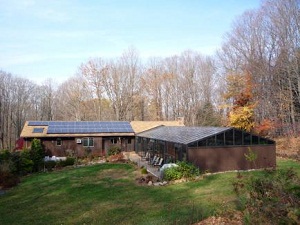Solar energy news recap
 Last week, renewable energy and solar shined. The news came from all over—from President Obama’s State of the Union, from NASA, from states, school systems and more.
Last week, renewable energy and solar shined. The news came from all over—from President Obama’s State of the Union, from NASA, from states, school systems and more.
The biggest piece of solar and clean energy news last week was found in President Obama’s State of the Union. He challenged the U.S. to move to 80 percent clean energy by 2035. He likened the challenge to the space race in the 1960’s, when the U.S. had to play catch-up with the Soviet Union after the launch of Sputnik. However, under the blanket of clean energy, natural gas and “clean coal” technologies may be considered.
Perhaps nothing showed how popular solar is becoming more than the participation level of Solar Energy International’s unpublicized free online Introduction to Renewable Energy Course. More than 1,200 people signed up for the class within the first few days it was offered.
Schools throughout the country continue to add solar arrays to offset their energy use as part of a long-term savings strategy. In one case, a plastic bag elimination campaign led to $10,000 to support the installation of a 7-kilowatt (kW) array at Basalt Middle School in western Colorado. Elsewhere in Colorado, Jefferson County Public Schools said six of the 30 photovoltaic arrays it is installing are now online. Each 100 kW array is being installed at no up-front cost, thanks to state, federal and utility incentives.
Both major companies offering solar arrays with no up-front costs to homeowners made the headlines last week.
Sungevity said it’s awarding schools and nonprofits for successfully referring new customers to the company. It will pay the organization $1,000 for each referral that ends up in the installation of a Sungevity system. Meanwhile, SolarCity expanded its leasing program to the nation’s capital. The company said its purchase of Clean Current Solar will allow it to offer solar leases in Washington, D.C., and in most of Maryland.
Maryland also made the solar headlines, thanks to the Department of Energy’s decision to install two photovoltaic arrays, totaling 352 kWs, at its Germantown, Md., facility. When completed, it will be one of the largest solar installations in the state.
What’s a capped landfill good for? Solar. That’s the case of Western Massachusetts Electric Co.’s planned 4.2 megawatt solar farm that will be built at a capped landfill in Springfield, Mass. Numerous other towns and utilities are also looking into converting former landfills into solar farms. When completed, the landfill solar farm will be the state’s largest.
Last week we learned that Louisiana-based power provider, Cleco Corp. is now testing various forms of renewable energy in its service area to determine which is best in the area. It’s installed various types of solar power, including thin-film, polycrystalline, monocrystalline photovoltaics. But it’s also testing wind and a biomass and gasification system with the University of Louisiana. When completed, the company will use the data collected to help homeowners choose which is best for their location.
U.S. solar companies got a little more international last week.
Abound Solar, a Colorado-based thin-film photovoltaic company, said it was approved to sell its products in Great Britain, becoming one of the first solar providers to meet the country’s stringent standards.
Evergreen Solar said it would abandon its manufacturing plant in Massachusetts and instead pursue manufacturing in China because of lower production costs. Unfortunately, that means 800 of its workers in Massachusetts will soon be out of jobs.
NASA made the solar headlines last week with its NanoSail-D nanosatellite. The spacecraft, which is propelled by the sun’s radiation hitting its 100 square-foot sail, originally was to deploy in December, but had failed to launch. Its sails finally unfurled, and it’s now orbiting the earth on course.
Image courtesy of Solar Connecticut.



